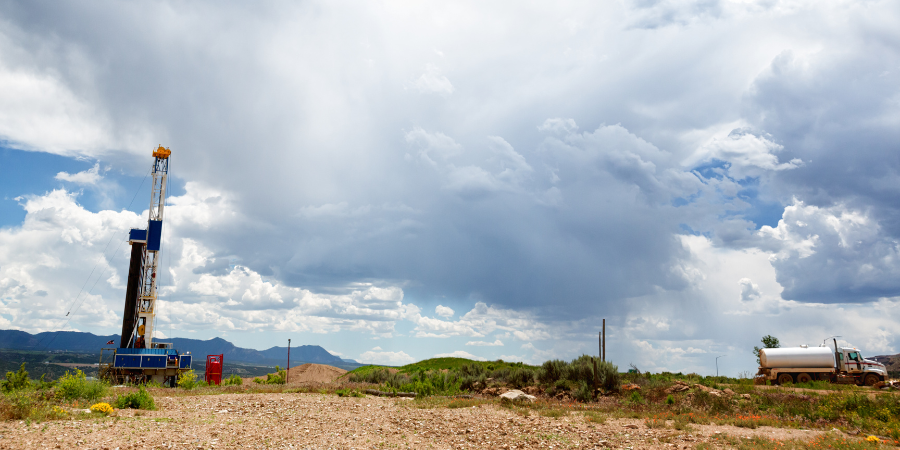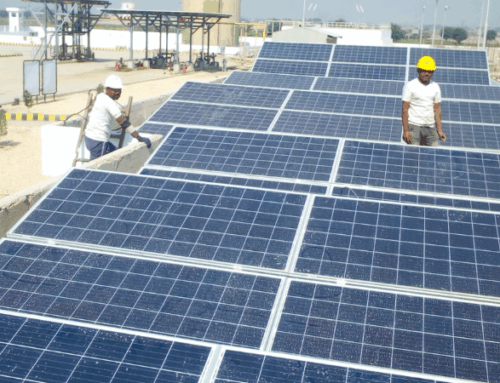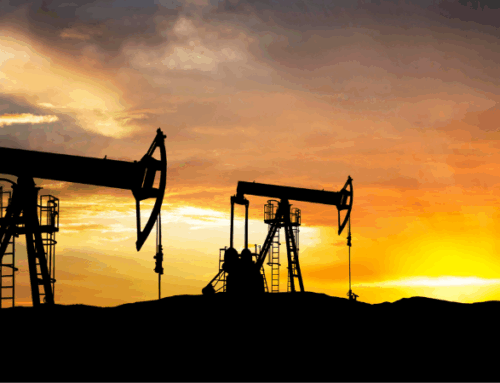Fracking, a revolutionary yet controversial technique, has dramatically reshaped the landscape of the energy industry. Short for hydraulic fracturing, this method involves injecting high-pressure water into rock beds deep beneath the Earth’s surface, creating fractures that release natural gas or oil.
This process has unlocked vast reserves of previously inaccessible fossil fuels, significantly boosting energy production and altering energy supply and demand dynamics in the United States. However, it has also sparked intense debate over its environmental impact, regulatory challenges, and long-term sustainability. This article delves into the world of fracking, exploring its profound impact on the energy economy, energy prices, and the environment.
What Is Fracking?
Oil and gas fossil fuels are created from decaying carbons over thousands of years and are found trapped between rocks under the Earth’s surface. Prior to the widespread adoption of hydraulic fracturing (fracking), natural gas and oil drillers primarily relied on conventional drilling techniques to extract oil and gas from underground rock formations. Let’s explore some of the common convention drilling techniques:
- Vertical Drilling: The most common method involves drilling straight down into the earth to reach natural gas deposits. This technique was effective for accessing gas trapped in permeable rock formations where the gas could flow easily into a well or pipeline.
- Water Flooding: In some instances, drillers used water flooding, a process where water was injected into adjacent oil and gas drilling wells to increase pressure and force the gas to move towards the new production well.
- Acidizing: This drilling process involved pumping acids into the earth to eat away at rock formations allowing new pathways for gas and oil to escape.
- Nitrogen Injection: Similar to water flooding, this process used nitrogen instead of water to create pressure vacuums and force the fossil fuels to flow in a new direction.
- Conventional Rotary Drilling Rigs: These were used to drill wells. This technology was very antiquated and often associated with higher costs.
- Exploration Techniques: Prior to fracking, gas and oil exploration relied on geological surveys and less on the sophisticated seismic imaging technologies. This made locating pockets of natural gas and oil more challenging, and hence more expensive.
The advent of fracking represented a significant technological leap forward in the gas and oil drilling sector. This new technology enabled easier access to gas deposits in shale formations that were previously uneconomical to exploit. Let’s explore the fracking process in more detail below.
Accessing Shale Formations
Fracking is primarily used to access oil and gas trapped in shale formations, which are layers of sedimentary rocks that were historically expensive to drill. Shale rock formations have low permeability, meaning oil and gas do not flow easily through them, making shale drilling a non-factor in the past.
The Fracking Process
The fracking process involves drilling a well, either vertically or horizontally, to reach the target shale rock formation. Once the desired depth is achieved, a high-pressure fluid mixture, typically water mixed with sand and chemicals, is injected into the well at a very high pressure. This high-pressure fluid fractures the rock formations and allows new pathways for the oil and gas to escape.
Role of Sand & Fracking Proppants
Sand or other materials, known as fracking proppants, are often mixed with the fracturing fluid to hold the rock fractures open once the injection process is completed. This ensures that the gas or oil can continue to flow out of the shale rock formation.
Horizontal Drilling and Multi-Stage Fracking
Modern fracking often combines horizontal drilling with multi-stage fracturing. This technique involves drilling horizontally through the rock layer and then drilling multiple fracking wells across the horizontal length of the well. This exposes the drilling operation to a larger section of the shale rock and allows for more energy production.
Revolutionizing Oil and Gas Production
Fracking has made drilling for gas and oil in shale formations more affordable. Because these rock formations were previously overlooked, fracking has led to a boom in oil and gas production, particularly in certain parts of the United States such as the Marcellus Shale. The new introduction of natural gas and oil supply into the market has drastically deflated prices over the past decade.
The Impact Of Fracking: Pros and Cons
In summary, fracking has been a game-changer in the oil and gas industry, unlocking vast reserves of previously inaccessible fossil fuels and altering the global energy landscape. However, it continues to be a topic of heated debate. Let’s explore some of the pros and cons of fracking in more detail below.
Pros Of Fracking
There are many pros of fracking to consider. From its economical impact on the energy sector to energy independence, there are many reasons to promote the continuation of this process.
Access To New Gas & Oil Supply
Because shale rock was historically not cost-effective to drill, the fracking process has unlocked new opportunities to discover oil and natural gas supplies in the United States. On a global scale, fracking technologies which have been implemented across the globe are contributing to the increased supply of fossil fuels. This is helping to meet increasing energy demand and balance the global energy economy.
Economic Boom
Shale drilling has created an economic boom in the shale regions. Drilling operations have created many new jobs, spurred local economic growth, and had a positive impact on tax revenue for states.
Lower Energy Prices
Due to the injection of new energy supplies, it has had a positive impact on lowering energy prices in the United States. In fact, natural gas prices reached 20 year lows shortly after the fracking boom in the Marcellus Shale. This drilling region has also made natural gas more available to the Northeast part of the U.S. during the Winter to meet heating demand. In fact, because of fracking, there are many energy price predictions for 2024 that are calling for lower rates.
Energy Independence
Fracking reduces the United State’s reliance on foreign fossil fuels. As drilling continues, we are moving closer and closer to energy independence. When looking at 2024 energy industry trends, fracking plays a critical role in allowing for a reduction on foreign energy dependence.
Cons Of Fracking
On the flip side, there are many fracking naysayers. These critics blame fracking for environmental effects, seismic impacts, and more. Let’s explore some of the cons of fracking in more detail.
Negative Environmental Impact
The fracking process requires a significant amount of water, which has been viewed in a negative light due to many region’s water crises. In addition, some critics claim that fracking can contaminate groundwater and lead to harmful methane emissions.
Water Contamination & Health Risks
Communities near fracking sites may face health risks from air and water contamination, including cancer risks and other health problems. In many fracking communities, there are resistance groups that lobby local politicians in an attempt to ban or delay fracking efforts.
Sustainability
There is also a concern for the long term viability and sustainability of fracking. Critics of this process argue that wells can dry up quickly, which requires new sites to be established and drilled. This further promotes the negative environmental impacts of the fracking process.
Want To Learn How Fracking Can Help Your Business
At Diversegy, our team of natural gas market experts continually monitor total natural gas dry production numbers in the U.S. Fracking rigs help to improve natural gas production and supply in the market, often deflating prices in the process. Contact our team today to learn more about how increased fracking production can help you to secure lower energy prices for your business.



